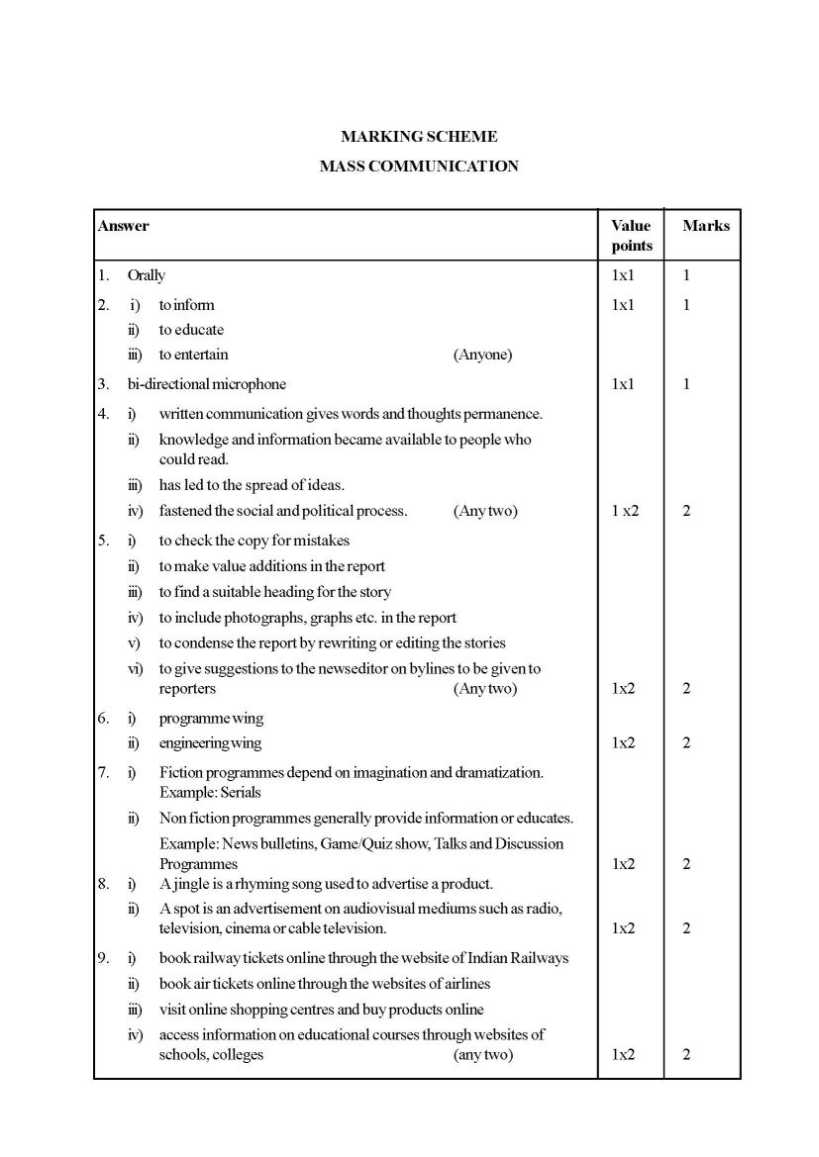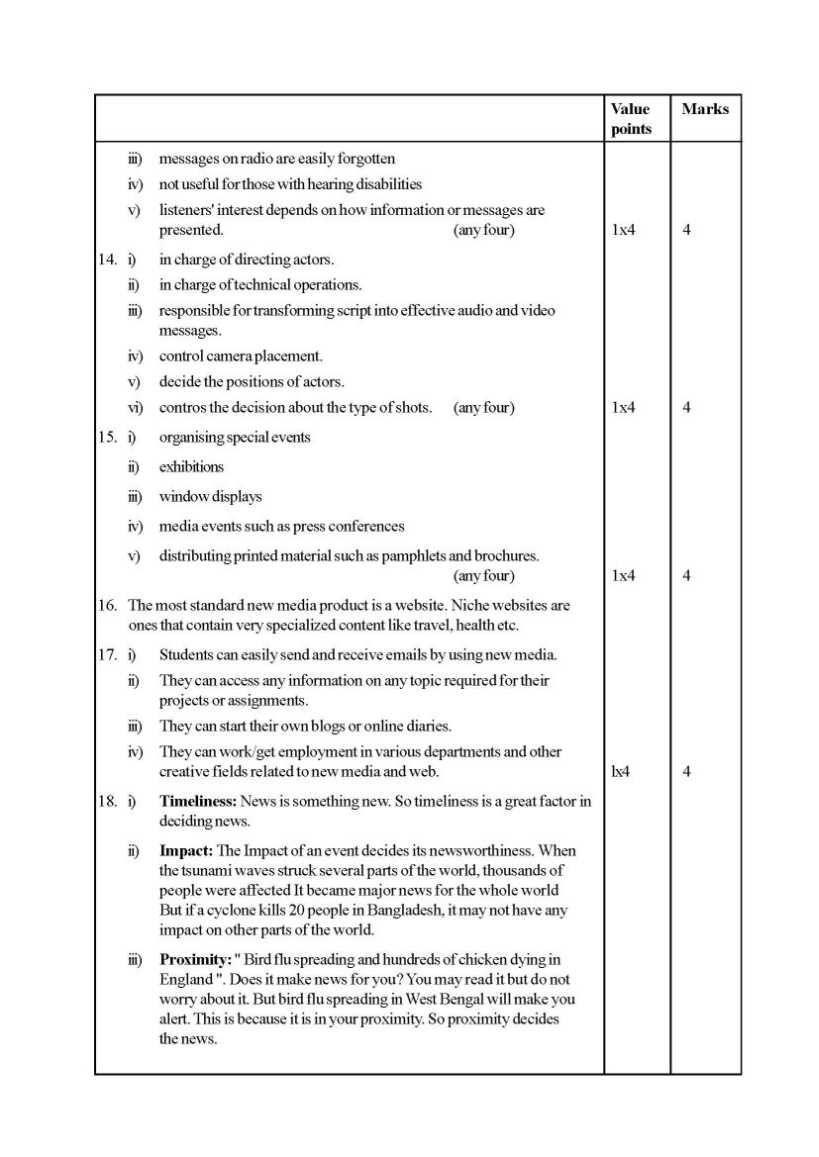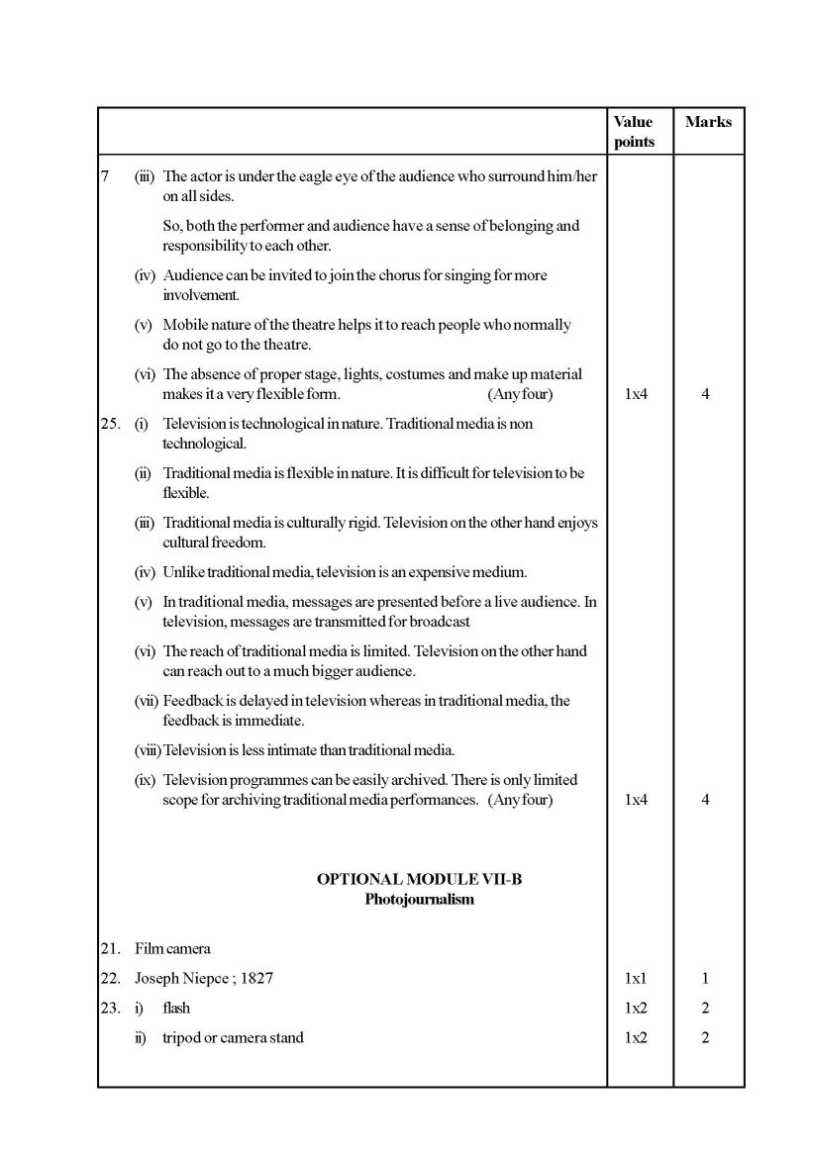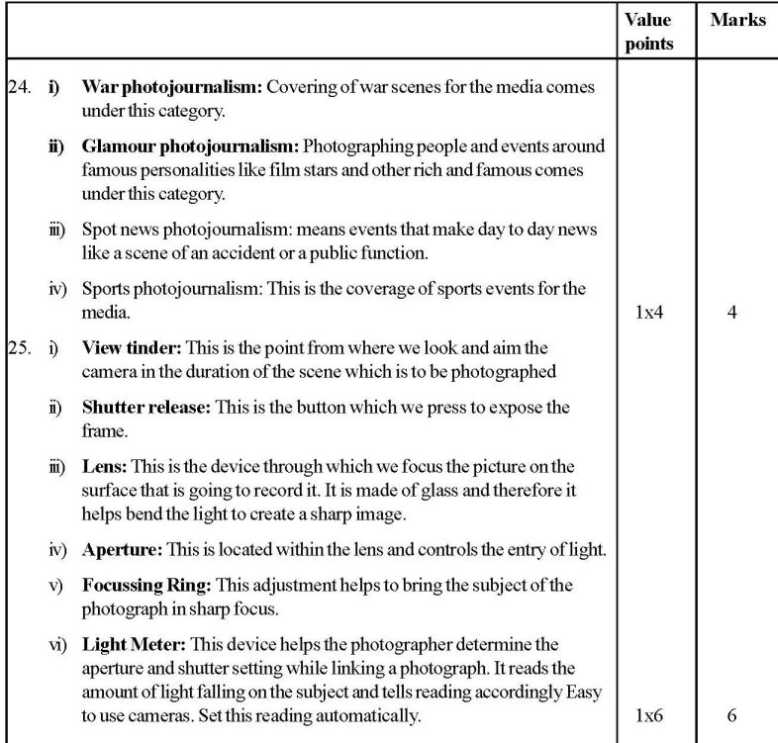Below I am providing you the UGC NET Mass Communication Question paper in the form of PDF file whose some questions are as follows
1. When signs are organised into
systems, they will become
(A) Codes (B) Letters
(C) Words (D) Attitudes
2. In a post-modern society, culture is
(A) Regulated
(B) Commodified
(C) Traditional
(D) Non-pluralistic
3. No new information is available in
(A) Dynamic communication
(B) Internal communication
(C) Phatic communication
(D) Conflict communication
4. Redundancy helps in solving the
problems associated with
(A) the equipment
(B) the law
(C) the audience
(D) the political system
5. Vivendi universal is a well-known
media organisation of
(A) France
(B) Australia
(C) The United States
(D) Canada
6. Which was the newspaper that
Mahatma Gandhi edited in the year
1919 ?
(A) Indian Opinion
(B) National Herald
(C) Pioneer
(D) Satyagrahi
7. Reaching the maximum number of
people at the least possible cost by
media is called
(A) Media manipulation
(B) Mediated communication
(C) Media efficiency
(D) Media consistency
8. A variable that creates an alternative
explanation of results is identified as
(A) Alternative variable
(B) Artifact
(C) Predictor variable
(D) Antecedent variable
9. Duplicating only the sampling and
experimental procedures of a
previous analysis is called
(A) Literal replication
(B) Instrumental replication
(C) Constructive replication
(D) Operational replication
10. Life style segmentation research
investigates respondent’s
(A) Education
(B) Income
(C) Occupation
(D) Interests
11. A study of a specific population as it
changes over a period of time is
known as
(A) Demographic analysis
(B) Population analysis
(C) Cohort analysis
(D) Cluster analysis
12. In advertising, a document that
describes the target market, budget,
creative strategy and objective is
known as
(A) Media profile
(B) Strategy document
(C) Media brief
(D) Audit plan
13. When a straight forward proposition
is used in advertising, it is called
(A) Emotional approach
(B) Dogmatic approach
(C) Creative approach
(D) Typical approach
14. Specimens of advertisements are kept
in
(A) the log book
(B) the sample book
(C) the copy book
(D) the guard book
15. Saatchi and Saatchi is an agency that
specialises in
(A) Advertising
(B) Public Relations
(C) Event Management
(D) Opinion Surveys
16. Lobbying is an activity of
(A) Publicists
(B) Propagandists
(C) Public relationists
(D) Media Managers
17. When public relations personnel
manage news in the media, it is
termed ?
(A) Spin doctoring
(B) News commitment
(C) News control
(D) Perceived necessity
18. The readability test, Fog Index, was
developed by
(A) Rudolph Flesch
(B) Robert Gunning
(C) James Reston
(D) Walter Cronkite
19. When words have the emotive
potential, they are categorised as
(A) Metanyms
(B) Parawords
(C) Similes
(D) Metaphors
20. Curtain-raiser is part of a/an
(A) Investigative journalism
(B) Interpretative journalism
(C) Advocacy journalism
(D) Counter-media
21. Ballooning is a cartoon contains
(A) Picture
(B) Text
(C) Guidelines
(D) No information
22. Journalism that depends upon
computer-assisted analysis of
existing information is known as
(A) Database journalism
(B) Offline journalism
(C) CAA journalism
(D) Technical journalism
23. When a camera pans fast to a visual’s
blur and steadies into a correct focus
at a particular point, it is called
(A) Hand-held camera
(B) Whip pan
(C) Tilting
(D) Panning
24. ‘Taxonomy of News Values’ is
written by
(A) Paul Lazarsfeld
(B) David M. White
(C) Stanley Cohen
(D) Galtung and Ruge
25. The first committee on National
Communication Policy in India was
headed by
(A) R.R. Diwakar
(B) Ram Vilas Paswan
(C) Balaram Jhakhad
(D) Jyothi Basu
26. Assertion (A) : News photographs
and Magazine advertisements
are mostly indexical and
always iconic in nature.
Reason (R) : The categorisation
is mostly arbitrary and
insignificant in meaning
production.
(A) Both (A) and (R) are true.
(B) Both (A) and (R) are true, but
(R) is not the correct
explanation of (A).
(C) (A) is true, but (R) is false.
(D) (A) is false, but (R) is true.
27. Assertion (A) : In India, any law of
privacy should be by enacting
statutes in conformity with
constitutional limitations.
Reason (R) : The law of torts in
India is based on English law.
(A) Both (A) and (R) are true.
(B) Both (A) and (R) are true, but
(R) is not the correct
explanation of (A).
(C) (A) is true, but (R) is false.
(D) (A) is false, but (R) is true.
28. Assertion (A) : The Union
Government can exercise
limited control over the volume
of circulation of Indian
newspapers.
Reason (R) : The control over the
volume of newspaper
circulation is prima facie an
unreasonable restriction on the
press freedom.
(A) Both (A) and (R) are true.
(B) Both (A) and (R) are true, but
(R) is not the correct
explanation of (A).
(C) (A) is true, but (R) is false.
(D) (A) is false, but (R) is true.
29. Assertion (A) : Verbal language
and photography are fine
examples of representational
codes.
Reason (R) : Both of them
perform referential functions.
(A) Both (A) and (R) are true.
(B) Both (A) and (R) are true, but
(R) is not the correct
explanation of (A).
(C) (A) is true, but (R) is false.
(D) (A) is false, but (R) is true.
30. Assertion (A) : Vladimir Propp’s
Morphology of Folk Tales is a
benchmark study for
researchers in traditional media.
Reason (R) : India is rich in
traditional media, and as such
does not require western inputs
much for research.
(A) Both (A) and (R) are true.
(B) Both (A) and (R) are true, but
(R) is not the correct
explanation of (A).
(C) (A) is true, but (R) is false.
(D) (A) is false, but (R) is true.
31. Assertion (A) : German influences
on Bollywood movies are
facilitated by technology and
black money.
Reason (R) : In India, movie
making is a capital-intensive
industry and needs strong
public sector support.
(A) Both (A) and (R) are true.
(B) Both (A) and (R) are true, but
(R) is not the correct
explanation of (A).
(C) (A) is true, but (R) is false.
(D) (A) is false, but (R) is true.
32. Assertion (A) : Traditional media in
India are mostly mythological
due to audience preference.
Reason (R) : Modern mass media
are responsible for this as they
have made audience prefer
traditional media.
(A) Both (A) and (R) are true.
(B) Both (A) and (R) are true, but (R)
is not the correct explanation of (A).
(C) (A) is true, but (R) is false.
(D) (A) is false, but (R) is true.
33. Assertion (A) : Lower-case headlines
are easier to read than all caps
headlines.
Reason (R) : Research has shown
that headlines set in all caps are
read 12 percent slower than those
set in caps and lower case letters.
(A) Both (A) and (R) are true.
(B) Both (A) and (R) are true, but (R)
is not the correct explanation of (A).
(C) (A) is true, but (R) is false.
(D) (A) is false, but (R) is true.
34. Identify correct sequence of
television communication in India :
(A) Satellite Instructional
Television experiment
Television Stations started in
Bombay and Madras,
Television Centre in Delhi,
Television colour transmission.
(B) Television Stations started in
Bombay and Madras,
Television colour transmission,
Satellite Instructional
Television Experiment,
Television Centre in Delhi.
(C) Television Centre in Delhi,
Television Stations started in
Bombay & Madras, Satellite
Instructional & Television
experiment television colour
transmission.
(D) Satellite Instructional Television
Experiment, Television Colour
Transmission, Television centre
in Delhi, Television Stations
started in Bombay and Madras.
35. Identify correct sequence of
government organisation established
(A) National Film Archives of
India, Non-Aligned News Pool,
Directorate of Field Publicity,
Directorate of Film Festivals.
(B) Directorate of Field Publicity,
Directorate of Film Festival,
Non-Aligned News Pool,
National Film Archives of
India.
(C) Directorate of Field Publicity,
National Film Archives of India,
Directorate of Film Festivals,
Non-Aligned News Pool.
(D) Directorate of Film Festivals,
Non-Aligned News Pool,
National Film Archives of India,
Directorate of Field Publicity.
36. List the right sequence of the earliest
known journals printed in the world
from
(A) Egypt, Korea, China, Italy
(B) Korea, Egypt, Italy, China
(C) Italy, Korea, Egypt, China
(D) Italy, China, Egypt, Korea
37. Find out the correct chronological
sequence of the following advertising
agencies :
(A) O & M, B.B.D.O., Mudra, Lintas
(B) Lintas, Mudra, O & M, B.B.D.O.
(C) B.B.D.O., O & M , Lintas, Mudra
(D) Mudra, B.B.D.O., Lintas, O & M
38. Identify the correct sequence of five
functional stages of developmental
model for product, person and
PR
campaign.
(A) Distribution, participation,
legitimacy, penetration,
identification
(B) Identification, legitimacy,
participation, penetration,
distribution
(C) Participation, identification,
penetration, distribution,
legitimacy
(D) Legitimacy, participation,
identification, Penetration,
distribution
39. Identify right sequence of first Indian
language newspaper published
(A) Utkal Dipika, Samachar Darpan,
Digdarshan, Sambad Kaumudi
(B) Sambad Kaumudi, Digdarshan,
Utkal Dipika, Samachar Darpan
(C) Samachar Darpan, Utkal Dipika,
Sambad Kaumudi, Digdarshan
(D) Digdarshan, Samachar Darpan,
Sambad Kaumudi, Utkal Dipika
40. Match List – I with List – II :
List – I List – II
a. Defamation 1. Trial by media
b. Fair dealing 2. Possession of
information against
National security
c. Contempt
of Court
3. Imputation of
illegitimacy
d. Official
secret
4. Motive behind
making comments
Codes :
a b c d
(A) 1 4 2 3
(B) 3 4 1 2
(C) 4 1 3 2
(D) 2 3 4 1
41. Match List – I with List – II :
List – I List – II
a. B.G. Verghese 1. SITE
b. Rajendra Singh 2. Micro-finance
c. Mohammed
Yunus
3. Aravale
d. Indira Gandhi 4. Project
Chattera
Codes :
a b c d
(A) 4 2 1 3
(B) 4 2 3 1
(C) 4 3 2 1
(D) 4 1 3 2
42. Match List – I with List – II :
List – I List – II
a. Harold D.
Lasswell
1. Linear model of
communication
b. Shannon &
Weaver
2. Two-step flow of
communication
c. Ruge &
Galtung
3. Political
communication
d. Elihu Katz 4. Selective gate
Keeping
Codes :
a b c d
(A) 4 2 3 1
(B) 3 1 4 2
(C) 4 3 2 1
(D) 3 2 1 4
43. Match List – I with List – II :
List – I List – II
a. Construct 1. Scientific
method
b. Positivism 2. Operational
definition
c. Measurement 3. Logical
reasoning
d. Empiricism 4. Intermediate
level
Codes :
a b c d
(A) 2 3 1 4
(B) 2 1 4 3
(C) 2 3 4 1
(D) 2 4 3 1
44. Match List – I with List – II :
List – I List – II
a. Age 1. Survey
b. Co-variation 2. Independent
variable
c. Coding 3. Causation
d. Schedule 4. Content analysis
Codes :
a b c d
(A) 2 3 4 1
(B) 1 2 3 4
(C) 3 4 1 2
(D) 4 2 3 1
45. Match List – I with List – II :
List – I List – II
a. Sex 1. More than one
sound heard at the
same time
b. Fading
on
2. Sound effects
c. Segue 3. Performer moves
towards microphones
d. Blend 4. Smooth transitions
from one sound to
another
Codes :
a b c d
(A) 3 2 1 4
(B) 1 4 3 2
(C) 2 3 4 1
(D) 4 1 2 3
Read the following passage and answer
Question Nos. 46 to 50 :
Critics refer the cultural imperialism as
cultural domination. John Tomlinson has
emphasized that imperialism groups
specific form of domination. In case of
cultural imperialism in the third world, it
points out towards the links between
present domination and colonial past. The
term is ambiguous between a set of
economic and political meanings. To
maintain specificity one must choose the
term cultural imperialism as a pattern of
inherited colonial attitudes and practices or
as the practices and effects of on going
system of economic relations within global
capitalism. There are other ways of
speaking about cultural imperialism as
media imperialism as a discourse of global
capitalism and as a critique of modernity.
With reference to media imperialism,
cultural imperialism places media at the
centre of things. Many a times writers
consider cultural imperialism and media
imperialism as synonyms. On one hand
mass media are constantly and rapidly
expanding in terms of technical power,
penetration coverage and representation of
both public and private life in the west.
Here media is considered as central
cultural reference point of modern western
capitalism. If so is the case cultural
imperialism is a dominance of one’s
culture’s media over another or as global
spread of “mass mediated culture”. Further
cultural imperialism poses a threat to
national cultural identity. In dealing with
this discourse of national cultures, we must
think of the various levels of locality.
Cultural imperialism is also considered
critique of global capitalism and capitalism
is an homogenizing cultural force. The
perception here is that everywhere in the
world is beginning to look and feel the
same. Cities in any part of the world
display uniform features. Further the
spread of capitalism is the spread of culture
of consumerism. The discourse of cultural
imperialism which takes capitalism as its
target needs to be connected with that
which addresses the discontent of
modernity itself. Cultural imperialism is
not only effecting individuals but the world
itself. Modernity refers to main cultural
direction of global development.
Modernity and development though by no
means necessarily linked as concepts, have
become closely identified. This question
is that what is the way of responding to
the ambiguous cultural conditions of
modernity.
46. What is cultural imperialism ?
(A) Study of cultures
(B) Negatively marked notions of
power.
(C) Inherited attitudes and practices
from past
(D) Forced ways of thinking
exercised by notions.
47. What does media imperialism refer
to ?
(A) Media’s role in reflecting
cultures
(B) As inseparable concepts
(C) Media as a centre of reference
point
(D) Media and cultural imperialism
as two separate aspects
48. How does cultural imperialism poses
a threat to nationality ?
(A) By invading the foreign
cultures.
(B) By dominating specific
cultures.
(C) By being functional in eroding
local cultures.
(D) All the three mentioned above
49. How does cultural imperialism act as
a critique of global capitalism ?
(A) Consumer culture is imposed
on developing societies.
(B) Culture of capitalism is
incapable of providing
meaningful and satisfying
cultural experiences.
(C) Process of cultural imperialism,
have functional role to play in
the spread of capitalism
(D) Capitalism implies a cultural
totality of economic / social /
political and social aspects.
50. How does modernity refer to the
main cultural direction of global
development ?
(A) By projecting ‘particular ways
of life’ dominatingly.
(B) By homogenization of cultural
diversity
(C) By relating the idea of
modernity to that of capitalist
society.
(D) By the way of projecting as
destination of all cultural
development.
For complete paper here is the attachment







